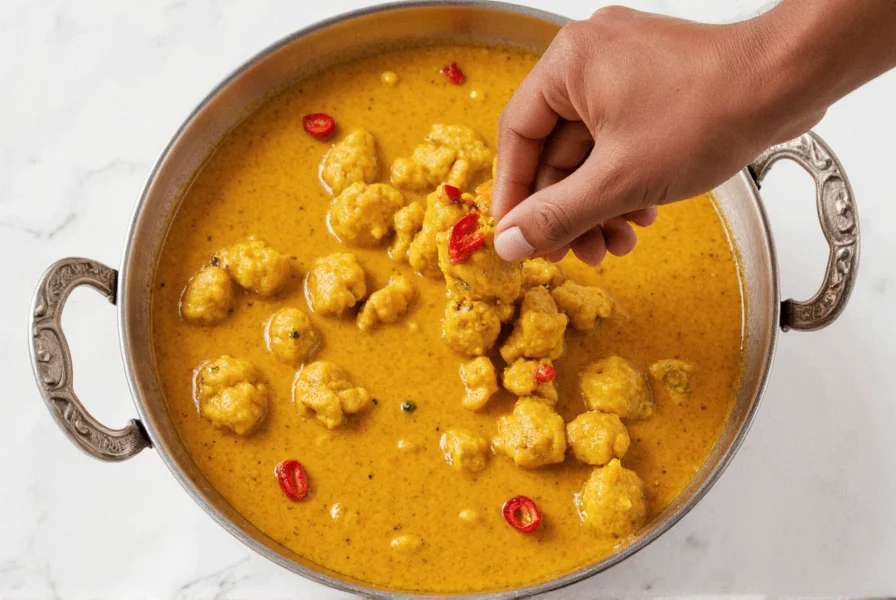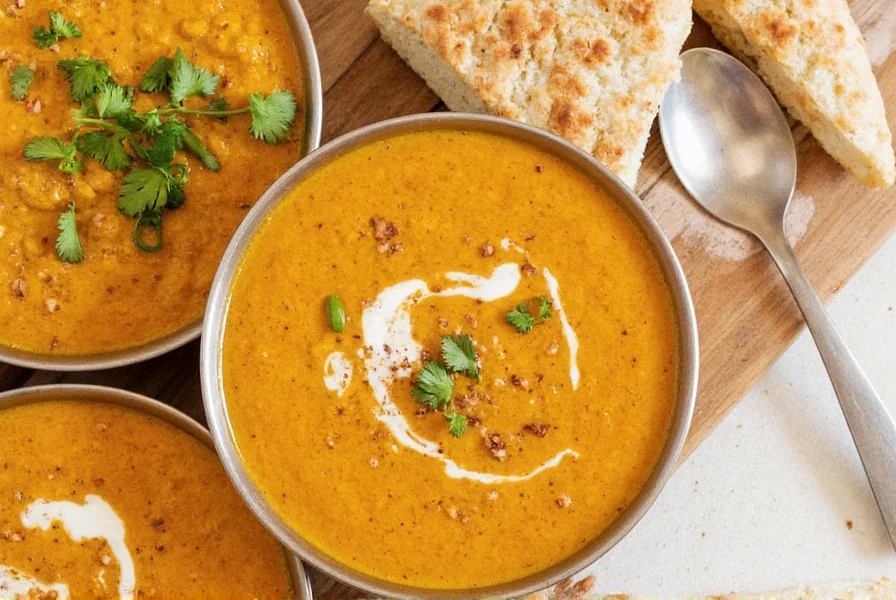The primary reason curry is spicy is capsaicin, a compound found in chili peppers. Capsaicin stimulates pain receptors in your mouth, creating a burning sensation. While chili peppers are the main source, other spices like black pepper and ginger can also contribute to the heat. This guide explains the science behind curry spiciness and how to control it.
Table of Contents
- The Science of Curry Spiciness
- Other Spices That Add Fire and Flavor
- Curry Types and Their Spice Levels
- How to Measure Curry Spiciness
- Tips to Control the Heat in Curry
- Buying Guide: Choosing the Right Spices for Your Curry
- Frequently Asked Questions About Curry Spiciness
- Conclusion: Master the Magic of Curry Heat
The Science of Curry Spiciness
So, why does your tongue feel like it’s dancing when you eat curry? The answer lies in capsaicin, the active compound found in chili peppers that stimulates pain receptors in your mouth — giving you that signature burning sensation.
Common Chilies Used in Curries Around the World
| Chili Type | Scoville Heat Units (SHU) | Flavor Profile | Popular Use |
|---|---|---|---|
| Bird’s Eye Chili | 50,000–100,000 | Sharp, fruity | Thai red/green curries |
| Serrano Pepper | 10,000–23,000 | Crisp, bright | Mexican-style curries or fusion recipes |
| Cayenne Pepper | 30,000–50,000 | Earthy, slightly smoky | Dry Indian curries, spice blends |
| Kashmiri Red Chili | 1,000–10,000 | Vibrant color, moderate heat | Mild Indian curries, tandoori dishes |
| Hatch Green Chili | 2,500–8,000 | Grassy, slightly sweet | New Mexican curries, fusion styles |
But not all chilies are created equal! Some bring slow-burn heat, while others hit you immediately. For example:
- Bird’s Eye Chilies are small but mighty — they deliver instant, sharp heat.
- Ghost Peppers (Bhut Jolokia) offer a delayed burn that builds over time, making them popular in extreme hot sauces and experimental curries.
Other Spices That Add Fire and Flavor
Heat isn’t only about chilies. Several other ingredients contribute to that warm, tingling, or slightly numbing sensation you get from certain curries:
- Black Pepper: Contains piperine, which gives a subtle, woody warmth.
- Ginger: Adds a zesty, almost peppery kick that lingers at the back of the throat.
- Cumin: Has a smoky depth that enhances overall heat perception without actual spiciness.
- Garlic: Offers a mild, sharp pungency that intensifies during cooking.
- Szechuan Peppercorns: Not actually a pepper, but a citrusy spice that creates a tingling numbness — perfect for Sichuan-style curries.
These spices may not set your mouth on fire like habaneros do, but they definitely play a role in how spicy — or satisfying — a curry feels.
Curry Types and Their Spice Levels
| Curry Type | Origin | Main Heat Source | Spice Level (1–5) | Flavor Notes |
|---|---|---|---|---|
| Green Thai Curry | Thailand | Bird’s Eye Chilies | 4 | Herby, minty, and intensely spicy |
| Red Thai Curry | Thailand | Dried Red Chilies | 5 | Smoky, rich, and blazing hot |
| Yellow Thai Curry | Thailand | Spice blend with turmeric | 2–3 | Mellow, slightly sweet, with mild heat |
| Vindaloo | Goa, India | Red Chilies + Garlic | 4–5 | Tangy, sour, and deeply spicy |
| Korma | India/Pakistan | Minimal chili use | 1 | Creamy, nutty, and gently spiced |
| Japanese Curry | Japan | Mild curry powder blend | 1–2 | Umami-rich, savory, and comforting |
How to Measure Curry Spiciness
Understanding how spicy a curry will be can save you from a very uncomfortable dinner experience. Here’s how professionals (and smart home cooks) assess heat levels:
- Scoville Scale: This measures the capsaicin content of peppers, helping you estimate heat before adding them to your pot.
- Taste Testing: Always taste a tiny bit of the sauce before serving — especially if using unfamiliar chilies.
- Visual Cues: Darker red curries often indicate longer cooking times and deeper heat, whereas green curries usually suggest freshness and immediate heat.
- Texture Clues: Curries with visible seeds or large chili chunks tend to be hotter because seeds contain concentrated capsaicin.
Heat Perception Tips
Your body's sensitivity also plays a role. Factors like age, genetics, and previous exposure to spicy foods can change how hot a curry feels. So, don't blame yourself if your friend swears it's mild and you're reaching for a glass of milk!
Tips to Control the Heat in Curry
Want to enjoy a flavorful curry without setting your mouth ablaze? Here are some clever tricks to control the heat:
- Use Fewer Chilies: Seems obvious, but adjust based on variety and size.
- Remove Seeds and Membranes: These parts hold the highest concentration of capsaicin.
- Add Dairy: Coconut milk, yogurt, or cream can neutralize heat and mellow flavors.
- Incorporate Acid: Lemon juice or vinegar cuts through heat and balances out the spice.
- Toast Spices Gently: Over-toasting can increase bitterness and perceived spiciness.
- Let It Rest: Allowing the curry to sit for an hour lets the flavors meld and reduces aggressive spice notes.
- Pair With Cooling Sides: Raita, pickles, or even a cold beverage like lassi can soothe the palate.

Buying Guide: Choosing the Right Spices for Your Curry
Whether you're building your spice rack from scratch or upgrading your current stash, choosing quality ingredients is crucial. Here's a list of essential spices and products to consider for your next curry-making adventure:
Top 5 Must-Have Spices for Curry Lovers
| Product | Features | Best For | Recommended Brands |
|---|---|---|---|
| Cayenne Powder | High heat, easy to blend | Adding consistent spiciness to gravies and dry rubs | Mrs. Dash, McCormick |
| Fresh Bird's Eye Chilies | Intense heat with vibrant color | Thai and Southeast Asian curries | Local markets, specialty stores |
| Ground Turmeric | Natural color, earthy flavor | Golden hue and anti-inflammatory benefits | Rajah, Simply Organic |
| Cumin Seeds | Smoky, nutty aroma | Indian and Middle Eastern curries | Spice Garden, Badia |
| Curry Powder Blends | Premixed convenience | Quick meals, Japanese curry, or fusion styles | Madras Curry Co., Schwartz |
Specialty Products for Authentic Flavor
- Curry Leaves: Essential in South Indian curries for their lemony aroma. Look for fresh or frozen options.
- Galangal Root: A must-have for Thai curries; similar to ginger but more piney and less juicy.
- Lemongrass: Brings brightness and subtle citrus notes to Southeast Asian curries.
- Kaffir Lime Leaves: Intensely fragrant, used in Thai curries for their floral, lime-like essence.
- Fenugreek Seeds: Add bittersweet depth to North Indian dishes like Rogan Josh.
Where to Buy Spices
- Local Asian Grocery Stores: Often carry fresher and cheaper whole spices.
- Online Retailers: Amazon, Penzeys, and Kalustyans offer premium spice blends and rare finds.
- Farmer's Markets: Great for finding fresh chilies and herbs in season.
Frequently Asked Questions About Curry Spiciness
What is the main ingredient that makes curry spicy?
The primary ingredient responsible for curry's spiciness is capsaicin, found in chili peppers. Different curries use various types of chilies - from the fiery Bird's Eye chilies in Thai curries to milder Kashmiri chilies in some Indian dishes. The amount and type of chili used directly determines how spicy a curry will be.
Why does spicy curry make my mouth feel like it's burning?
Curry feels "hot" because capsaicin (the compound in chili peppers) binds to pain receptors in your mouth called TRPV1 receptors. This tricks your brain into thinking your mouth is actually burning, triggering reactions like sweating and flushing as your body tries to cool down. Interestingly, dairy products like yogurt can help neutralize this sensation because capsaicin is fat-soluble.
Are all curries supposed to be spicy?
No, not all curries are spicy! This is a common misconception. Curries vary widely across cultures - Japanese curry is typically mild and sweet, Indian Korma is creamy with minimal heat, and Thai yellow curry is much milder than its red or green counterparts. "Curry" refers to a cooking style rather than a specific spice level.
How can I reduce the spiciness of a curry that's too hot?
There are several effective ways to tame an overly spicy curry:
- Add dairy like coconut milk, yogurt, or cream
- Incorporate acid with lemon juice or vinegar
- Add sweet elements like sugar or honey
- Dilute with more broth or coconut milk
- Include starchy ingredients like potatoes that absorb heat
- Let the curry rest - flavors mellow over time
Can I make curry spicy without using chilies?
Yes, though the heat will be different from chili-based spiciness. Alternatives include:
- Black pepper (contains piperine for warmth)
- Ginger (provides zesty, peppery kick)
- Mustard seeds (offer sharp heat)
- Szechuan peppercorns (create tingling numbness)
Why do some spicy foods make me sweat but others don't?
Sweating from spicy food is your body's natural cooling response to the "heat" sensation caused by capsaicin. The reaction varies based on:
- Capsaicin concentration in the chilies used
- Your personal tolerance to spicy foods
- Genetic factors affecting your pain receptors
- The specific curry preparation (some cooking methods intensify heat)
Conclusion: Master the Magic of Curry Heat
Curry isn't just about heat — it's about harmony. Understanding what makes curry spicy allows you to tailor each dish to your own taste buds. Whether you love intense fire or prefer gentle warmth, the world of curry offers something for every spice lover.
From choosing the right chilies to mastering spice blends, controlling heat comes down to knowledge, technique, and practice. Now that you know the secrets behind the burn, you're ready to experiment, tweak, and savor your own homemade creations.
So go ahead — stir up some spice, embrace the burn, and make your kitchen a little hotter, one curry at a time!











 浙公网安备
33010002000092号
浙公网安备
33010002000092号 浙B2-20120091-4
浙B2-20120091-4